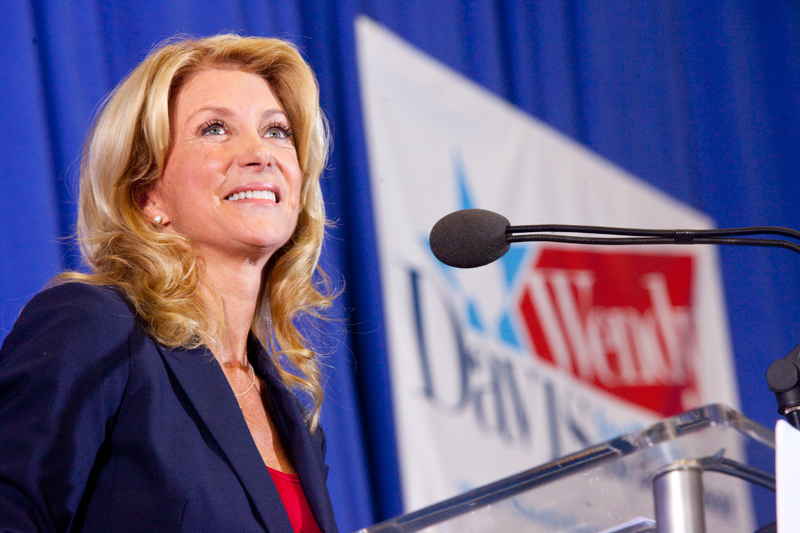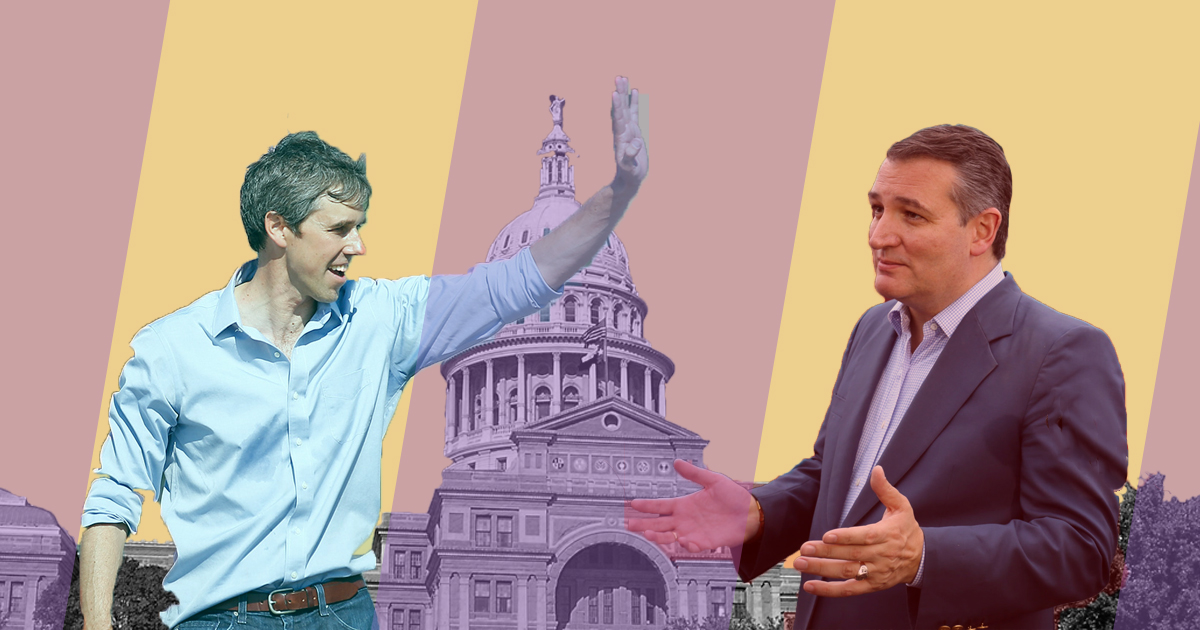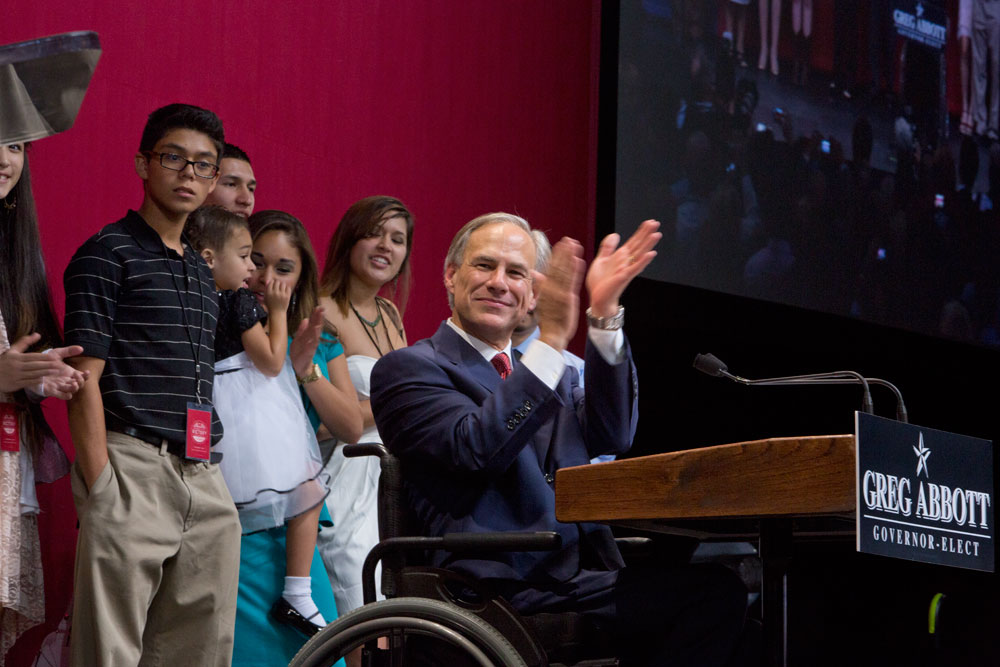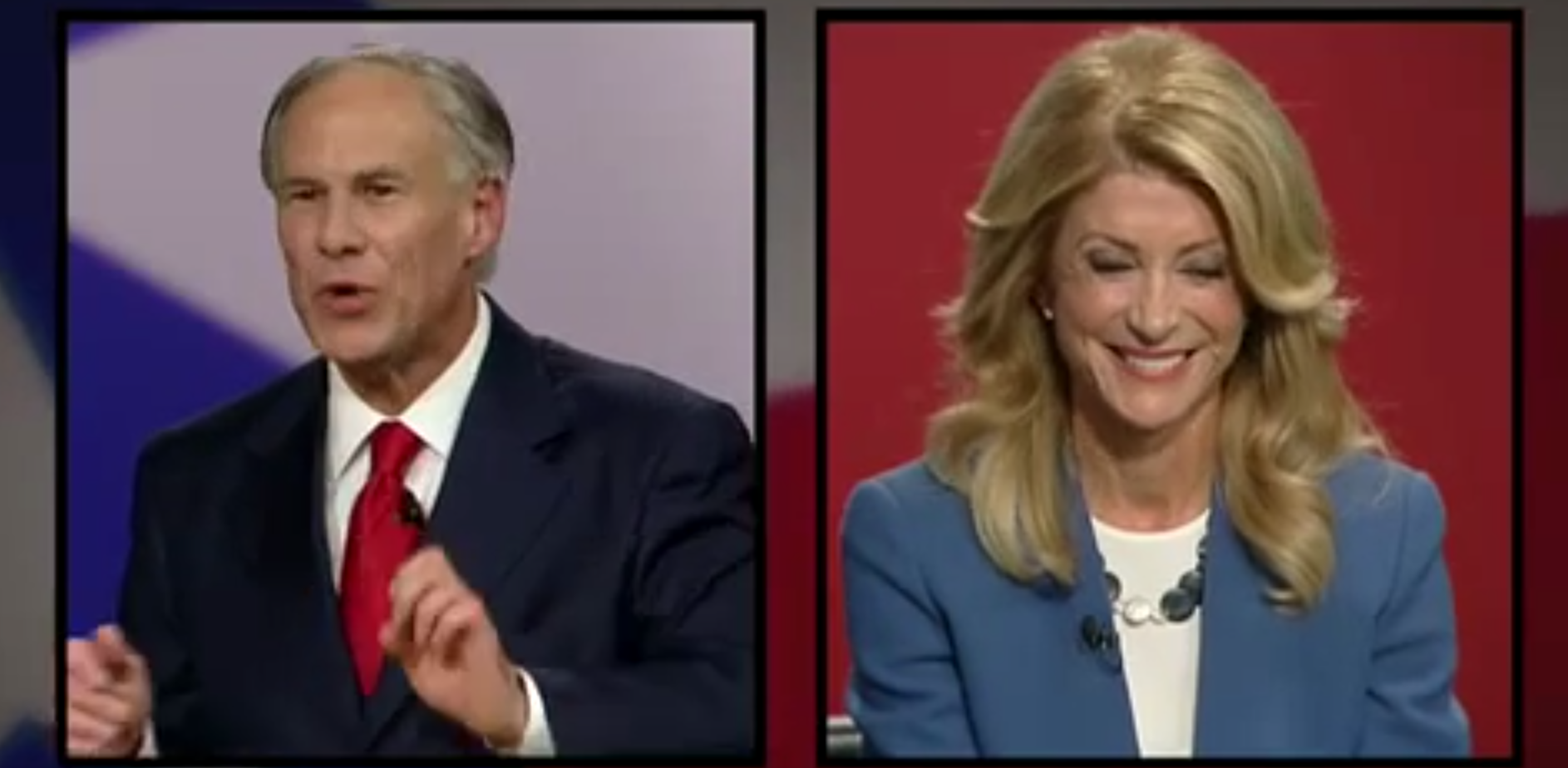
In Campaign Money War, Two (Small) Openings for Dems

The raft of campaign finance reports that dropped this week won’t do much to change the narrative of the race, especially the headline bout between Greg Abbott and Wendy Davis. Davis and organizations related to her campaign, structured in a somewhat unusual way, continue to pull in money—but catching up with Abbott’s gargantuan war chest seems far out of reach.
Even though they raised similar amounts of money over the last few months, Abbott counted $35.6 million on hand at the end of June, while Davis counted a little under $13 million. The next four months don’t offer good odds to close that gap. A much greater proportion of Davis’ money comes from out-of-state donors. There are plenty of Democrats elsewhere in the country this cycle that need money, and as the big-dollar donors figure out how to maximize their impact, the Davis campaign may not be at the top of their list.
Of course, that alone doesn’t doom the Davis effort—campaigns are about a lot more than money. But it does mean that she won’t be able to fight toe-to-toe in the TV and radio air war this fall. Abbott will be able to carpet bomb the state with ads, and other novel efforts, like this unusual ad his campaign placed in Texas movie theaters connected to a mobile phone number registration effort (his appalling attitude towards talking and texting at the movies should disqualify him from any elected office, but that’s another matter.) Davis will have to be more judicious.
None of that’s really new. Two other things about the recent campaign reports are more interesting—both pertaining to the Texas Senate. In the race for lt. governor, Dan Patrick and Leticia Van de Putte are pulling relatively even so far.
Since mid-May, Patrick has raised $1.34 million and spent a little over $789,000. He’s got almost $950,000 in the bank, and his campaign is saddled with over $2 million in loans. Van de Putte’s report covers six full months, and she didn’t have to contend with the pricy, high-stakes primary that Patrick did, so it’s hard to compare like to like.
But there are still figures that will cheer her supporters. She raised more than $2 million—roughly $1.1 million since Patrick won his runoff—and she reported more than $1.16 million in the bank on June 30, though Democratic strategist Harold Cook, associated with the campaign, says the current cash on hand figure is closer to $1.6 million.
As we get closer to November, it will be interesting to see how Patrick’s fundraising fares. He raised a small fortune during his brutal primary, but then he spent it. He’s still likely to outdo Van de Putte’s fundraising efforts by a wide margin, but many in the traditional GOP donor class are uneasy with Patrick. He doesn’t have a particularly good relationship with parts of the business lobby. Will he patch things up before the election—or can he find the money he needs with the GOP’s Tim Dunn wing? Can Van de Putte run a good enough campaign to make him need that money in the first place?
There’s also Senate District 10 in Fort Worth, Wendy Davis’ soon-to-be former seat. Davis held this district twice in election cycles that she wasn’t supposed to win. So the district was rejiggered to tilt further to the right. Here, a Democrat named Libby Willis is running against a very right-leaning tea party leader named Konni Burton, who, thanks to the district’s new form, will be the probable victor.
Between May 18 and June 30, Burton’s campaign spent $125,500, but only took in $35,725. She has only $45,364 on hand, and that’s after loaning herself $250,000. The money she raised came from a very small number of donors. Almost a third of the money she raised came from the Accountability First PAC, one of the familiar groups originally dedicated to kicking out House Speaker Joe Straus. There’s an oil and gas company, a few other PACs, and a handful of individual donors, and that’s it.
Willis’ report covers a larger time frame—from February 23 to June 30. That span is about three times as long, but Willis raised six times as much money—more than $210,000. And she has more than $102,000 left in the bank, despite having spent $138,061 more than Burton. And while she received plenty of big-dollar donations, she counts many small donations as well.
When Burton needs it, she can be sure to count on substantial cash flood from the traditional GOP groups. But Willis’ strong backing by big-dollar donors, especially from unions and Democratic PACs, provides the potential for a counterbalance—though of course she will continue to remain the underdog.


